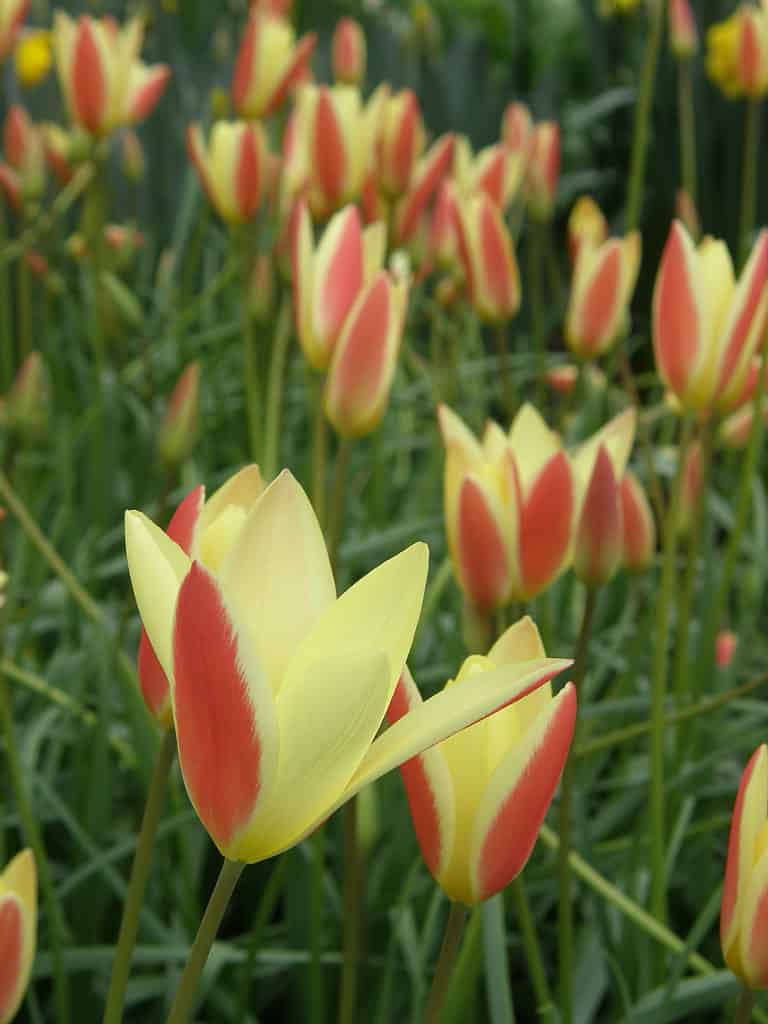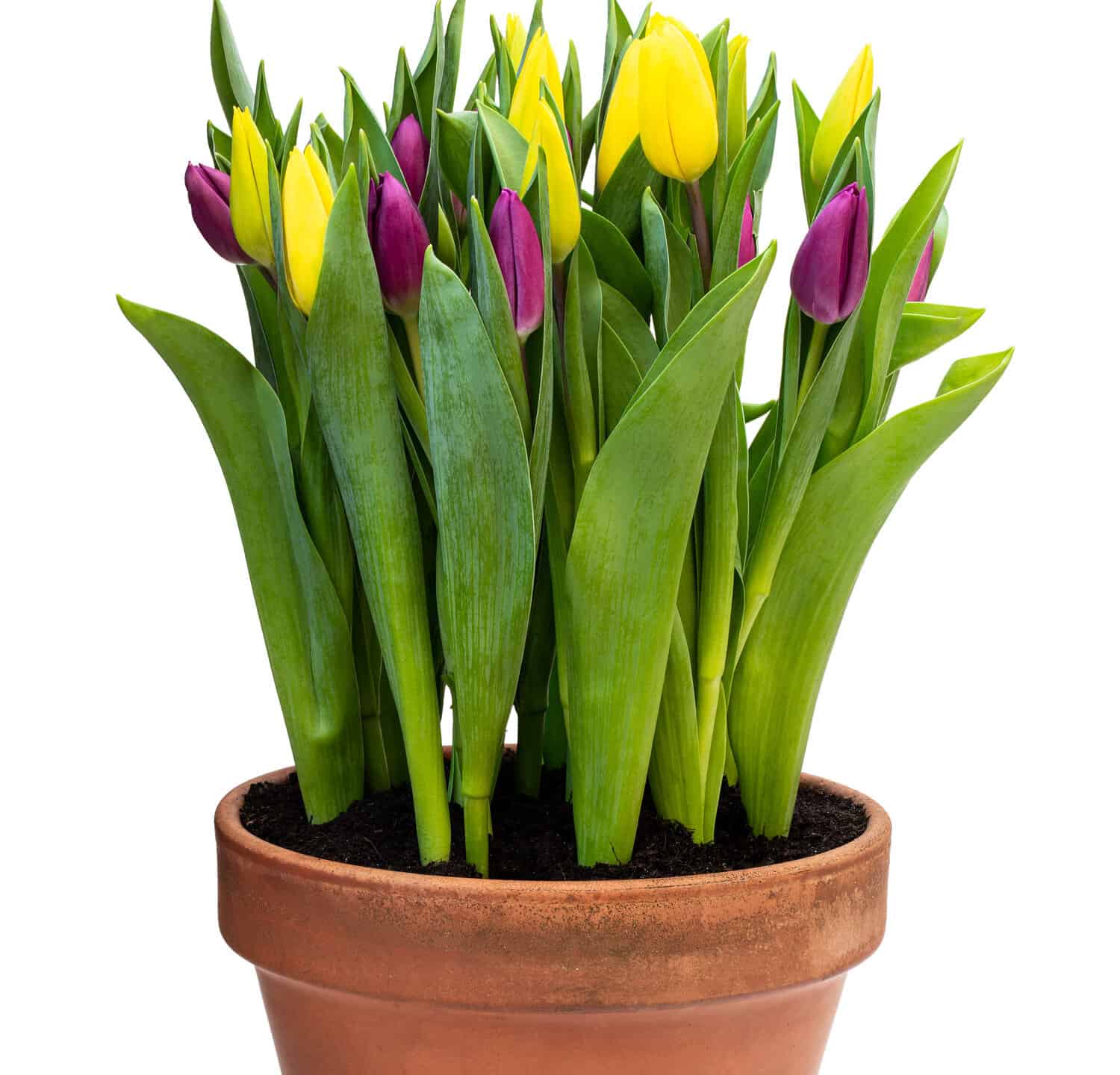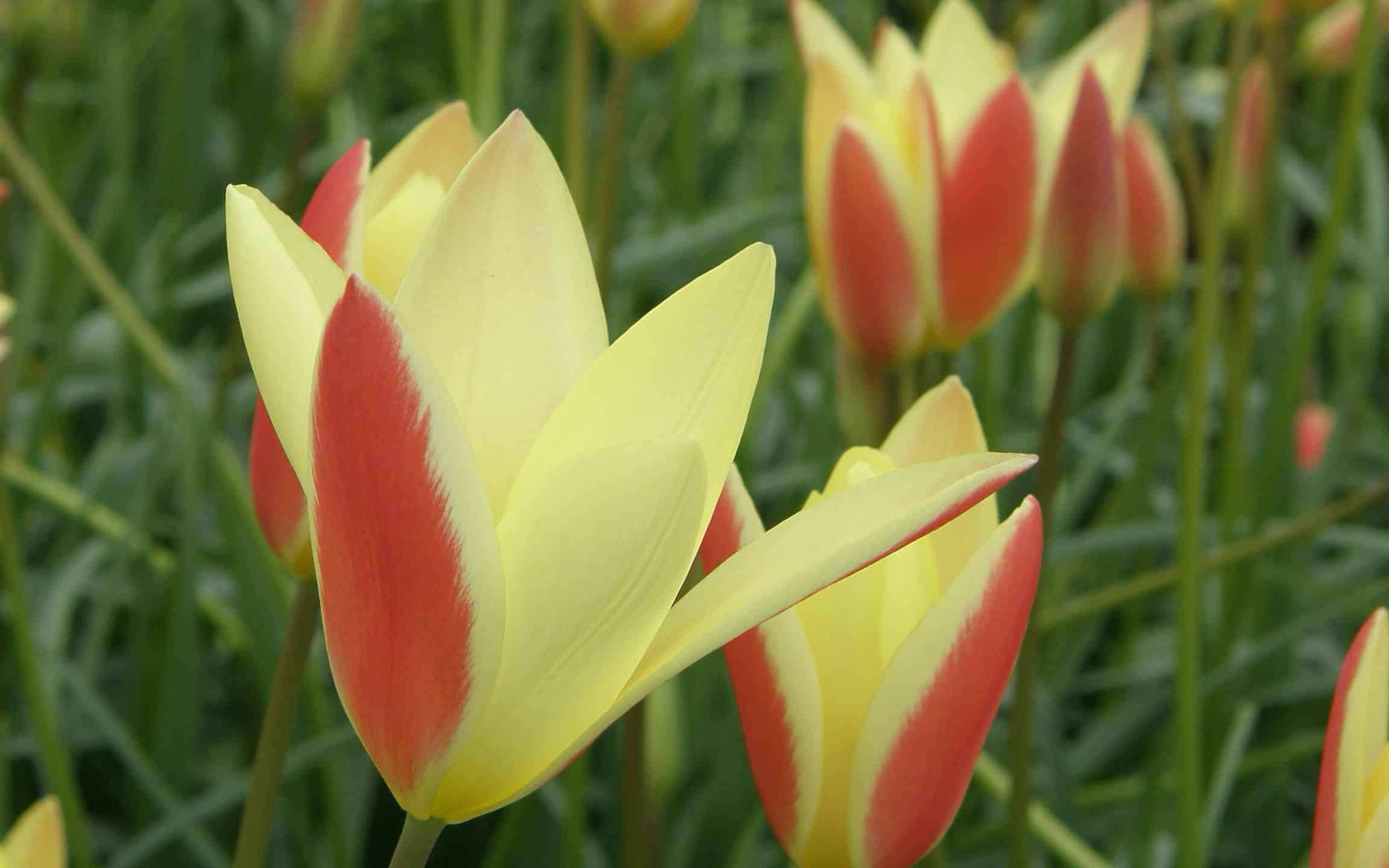Arkansas is called the natural state for good reason. The state’s mountains, rivers, lakes, flora, and fauna steal the hearts of nature lovers far and wide. From Wye Mountain to Moss Mountain Farm, the state embraces colorful flowers. And none is more cherished than the tulip. Their exquisite hues and graceful forms invoke a sense of wonder in the young and nostalgia in the old. Yet, in this Southern state’s location, tulips face a formidable challenge. The tulip’s delicate nature clashes with Arkansas’ climatic temperament. The struggle to cultivate these cool-weather flowers in a land known for its warm embrace becomes an intricate dance between aspiration and adversity, where gardeners embark on a quest to coax tulips to flourish against the odds. But it can be done! Keep reading to discover proven strategies to grow tulips in Arkansas.

Arkansas’ mountains, rivers, lakes, flora, and fauna steal the hearts of nature lovers far and wide. (Pictured: Big Lake National Wildlife Refuge)
©U.S. Fish and Wildlife Service Headquarters, Public domain, via Wikimedia Commons – Original / License
Proven Strategies to Grow Tulips In Arkansas: Climate
Tulips are generally not well-suited to the climate in Arkansas. They require a long period of cold dormancy in order to bloom. Tulips are native to colder regions, like Turkey, from whence they originated. In order to set blooms, tulips must undergo a natural chilling period during the winter months.
Arkansas has a mild and often humid climate, which doesn’t provide the necessary conditions for tulip bulbs to go through the required cold period. Without this period of cold dormancy, the bulbs will not develop properly and are unlikely to produce flowers. However, if you still wish to grow tulips in Arkansas, you may have some success with the following strategies.
Artificial Cold Striation
Tulips require a period of cold striation in order to bloom. In mild climates, artificial cold striation is a strategy that has been practiced to good results. Place your tulip bulbs in a paper bag with some peat moss. The peat moss will absorb moisture, helping to keep the tulips dry and healthy. A mesh bag may also be used, which allows for airflow. Store the bulbs in a refrigerator for 3-4 months before planting. This process mimics the cold dormancy period they require. Do not place the bulbs near fruit in the fridge. The ethylene gas released by the fruit as it ripens can have deleterious effects on the bulbs and their ability to flower.
Summer Storage
The best time to plant tulip bulbs in Arkansas is mid-fall (late September – late October). In order to have the time to cold-striate your tulip bulbs, you’ll need to dig them up after they have finished blooming in the spring. Tulips are considered perennial bulbs, meaning they will come back year after year. However, in warmer climates like Arkansas, unless there is an unusually cold winter, the bulbs will struggle to go through the necessary dormancy period. This can prevent them from producing blooms in subsequent years.
By digging up the bulbs after they bloom, you will improve their chances of survival and potential for reblooming. After the tulips have finished blooming, leave the foliage intact until it turns yellow and dies back naturally. The foliage helps provide energy to the bulb for future growth. Once the foliage has completely withered, carefully dig up the bulbs using a garden fork or shovel. Be cautious not to damage the bulbs during the process. Gently remove excess soil from the bulbs and let them dry in a well-ventilated area for a few days. This allows the outer layers to dry and prevents rot during storage.
Store the bulbs in your refrigerator until the planting season in the fall. When fall arrives, follow the recommended planting depth and spacing for your tulip bulbs.
Proven Strategies to Grow Tulips In Arkansas: Heat-Tolerant Tulips
While tulips are generally better suited to cooler climates, there are some tulip varieties that are known for their relative tolerance to warmer climates. Growing tulip varieties that are better suited to hot summers and mild winters is another of the proven strategies to grow tulips in Arkansas.
Tulipa clusiana
Tulipa clusiana, or the Lady tulip, is a wildflower tulip. Also known as the Persian tulip, it is native to regions of Central Asia, including Iran and Afghanistan. With its cup-shaped flowers and striking color contrasts, it is a splendid addition to any garden. Its naturalizing ability and ease of cultivation make it a favored choice among gardeners looking to add grace and elegance to their spring displays. Tulipa clusiana aka Persian tulip, is a species of tulip that is native to regions of Central Asia, including Iran and Afghanistan.
Tulipa clusiana belongs to the Liliaceae family and is highly regarded for its elegant and delicate appearance. The Lady tulip typically grows to a height of 6-12 inches (15-30 cm). It produces slender, green, lance-shaped leaves. The flowers of Tulipa clusiana are cup-shaped and feature six petals. The petals are usually bi-colored white or pale pink, with swaths of vibrant colors such as red, magenta, or purple. This contrast in color creates a stunning effect, making Tulipa clusiana an attractive addition to gardens and floral displays.
A notable characteristic of Tulipa clusiana is its naturalizing ability. It has a tendency to self-seed and spread over time, forming clusters or drifts of flowers. This quality makes it a good option for Arkansas’ warmer winters, as anecdotal evidence suggests that these gorgeous tulips do not require cold striation, so they do not need to be dug up and stored in the fridge! Tulipa clusiana thrives in well-drained soil and prefers a sunny location. It blooms in early to mid-spring, and its flowers typically last for several weeks.

The petals of
Tulipa clusianaare usually bi-colored white or pale pink, with swaths of vibrant colors such as red, magenta, or purple.
©Flower_Garden/Shutterstock.com
Tulipa clusiana v. chrysantha
Tulipa clusiana v. chrysantha, aka the Golden Lady tulip, is a cultivar of Tulipa clusiana. While both varieties belong to the same species, there are some notable differences between Tulipa clusiana and Tulipa clusiana v. chrysantha. The most significant difference is in the coloration of their petals. Whereas Tulipa clusiana has bi-colored petals of white to light pink, daubed with darker hues, Tulipa clusiana v. chrysantha has yellow petals with red accents. The Golden Lady tulip is similar in size to its scion, growing to between 6-10 inches (15-25 cm) tall.

Whereas
Tulipa clusianahas bi-colored petals of white to light pink, daubed with darker hues,
Tulipa clusiana v. chrysanthahas yellow petals with red accents.
©Sergey V Kalyakin/Shutterstock.com
Tulipa saxatilis
Tulipa saxatilis, commonly known as the Candia tulip, is a species of tulip that is native to rocky and mountainous regions of the eastern Mediterranean, including Greece, Turkey, and the Greek island of Crete. It is a member of the Liliaceae family and is highly valued for its unique beauty and ability to thrive in challenging growing conditions. The Candia tulip is a perennial plant that grows to a height of up to 8 inches (20 cm). It produces slender, lance-shaped leaves that are often bluish-green.
The flowers are typically solitary, though multiple blooms may arise from a single bulb. They are bowl-shaped and have six petals that come in a range of colors, including shades of red, pink, orange, yellow, and white. Some varieties also feature contrasting colors on the petals, adding to their visual appeal. One of the notable characteristics of Tulipa saxatilis is its adaptability to grow where many other plants struggle.

Some varieties of
Tulipa saxatilisfeature contrasting colors on the petals, adding to their visual appeal.
©iStock.com/Iva Vagnerova
Tulipa sylvestris
Tulipa sylvestris, commonly known as the woodland tulip or the yellow tulip, is a species of tulip that is native to parts of Europe and Northern Africa. It belongs to the Liliaceae family. It is known for its delicate beauty and bright yellow flowers. Tulipa sylvestris is adapted to partial shade and can be found growing under the canopy of trees or in open meadows with dappled sunlight. The blooms of Tulipa sylvestris have six pointed, bright yellow petals. They have a star-like shape when fully open and can measure up to 2 inches (5 cm) in diameter. The blooms appear on tall, slender stems that can reach heights of 12-20 inches (30-50 centimeters).
The flowering period typically occurs in late spring to early summer. An appealing aspect of Tulipa sylvestris is its naturalizing ability. Over time, it can spread by self-seeding, forming attractive colonies of flowers. Tulipa sylvestris does not require excessive care. Deadheading the flowers after they fade can redirect the plant’s energy toward bulb development rather than seed production.

©iStock.com/ANDA MIKELSONE
Proven Strategies to Grow Tulips In Arkansas: Container Gardening
Growing tulips in containers rather than planting them directly in the ground is yet another proven strategy for growing tulips in Arkansas. Container planting allows for more control over the growing conditions. Growing tulips in a container eliminates the need to dig them up every spring. If you have an extra fridge or extra space in your refrigerator, you can simply place the container, bulbs and all, directly into the fridge. Otherwise, it will be necessary to remove the bulbs from their containers. Still easier and less messy than digging bulbs out of the ground.

Growing tulips in a container eliminates the need to dig them up every spring.
©Elena Zajchikova/Shutterstock.com
Thank you for reading! Have some feedback for us? Contact the AZ Animals editorial team.








